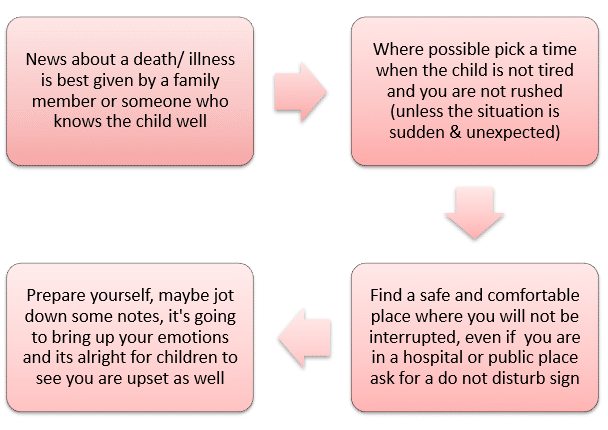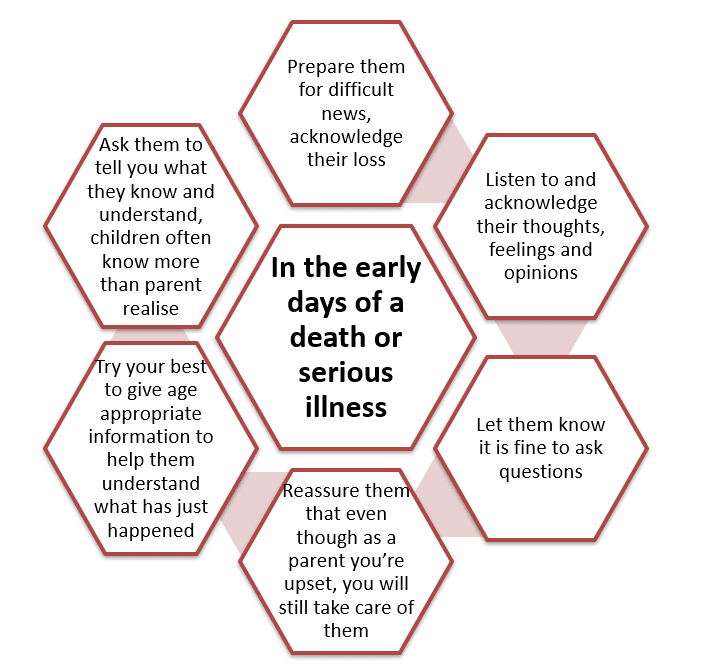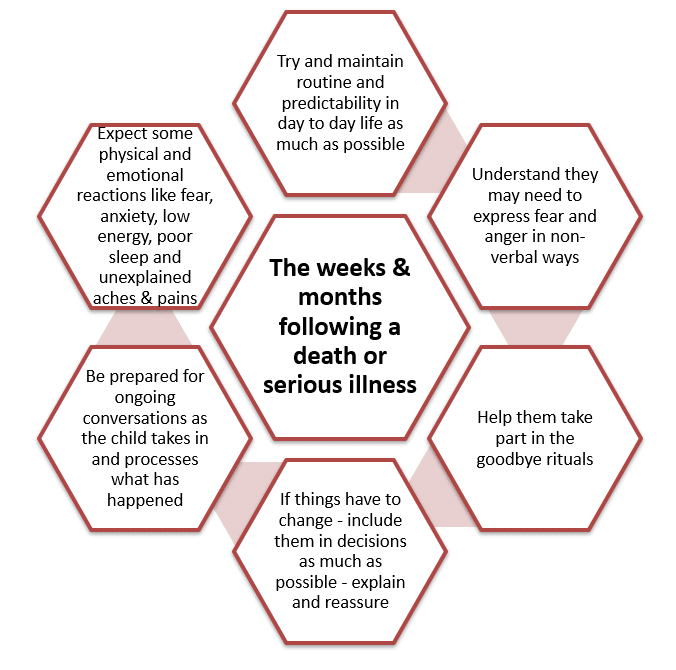The First Steps in Talking to Children About Grief
Resource credit: The Irish Childhood Bereavement Network
Naturally we want to shield children from pain. Giving a child difficult news about a death or serious illness is not easy at a time when you can be overwhelmed by grief yourself. It’s normal to be unsure about what to say, and how to find the words your child can understand.
Conversations about death are steps in a journey. Once you tell a child about a death or serious illness, you will need to have ongoing conversations as the child takes in and processes the information. The importance of support from family, friends and care settings (such as crèche or school) cannot be underestimated – much of children’s understanding of the world comes through family and the significant adults in their lives.
Children grieve in different ways depending on their personality, age and their understanding of death. Children need information and explanations in order to make some sense of what has happened. Be honest and use language that children understand. Information and reassurance help a child make sense of a loss.
Children can experience a variety of grief reactions
Emotional responses may include fear, anxiety, confusion, anger, sadness, relief, loneliness, guilt, isolation.
Physical responses may include low energy, interrupted sleep or eating patterns, unexplained aches and pains.
Behavioural responses may include lack of concentration, temporary dis-improvement in school work, memory loss, ‘acting out’, aggression, irritability or regression to behaviour more commonly associated with a younger age (such as bed wetting, thumb-sucking, or baby talk).
Social responses may include loss of self-esteem and confidence, withdrawal from friends and activities, or a fall-off in school attendance.
Children may exhibit none, some, or many of these responses. All bereaved children and young people need to be heard and have their need for information, simple explanations and reassurance met after a loss.
Talking to children about suicide
This is often considered one of the most difficult conversations to have. However, it is better a child hears it from a parent or someone in their immediate family circle rather than indirectly. How much information you give depends on the child’s age and personality. Suicide can be explained in stages, in the first instance you might explain that the person has died, and then there may be details of when and where, and that the person caused themselves to die because in their mind living had become too hard for them. Be aware of the shock factor. Repeat key information later. Check with them as to what they have understood.
The child may be angry and frustrated and have questions you can’t answer, and you may have to explain that you don’t have all the answers.Very often children imagine that they caused the person to die, and with suicide children worry that they could have done something to prevent it. Reassure them that this is not the case.



